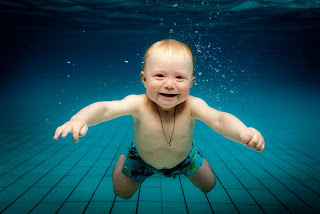All About Underwater Photography
Among the most exhilarating photography shooting experiences, is marine photography. The interminable diversity of aquatic life and unbelievable sub-marine creatures presents underwater photography as one of the richest providing unique experiences in the world of photography. The type and durability of the camera determines the quality of images you would get. The skills and the camera therefore form the heart of underwater image capturing.
Underwater shooting started a couple of decades ago. Underwater explorers and scholars mostly carried it out. Fewer shots were taken because of the compact cameras used and the disk space was limited. Nowadays, sophisticated hi-tech digital cameras are used in carrying out underwater photography. This has raised the bar when it comes to general image quality bringing great underwater shooting experience. Anyone can take photos underwater but taking quality world-class shots requires some skills and little bit of experience. To get great and unparalleled shots underwater, read on, for you to note some basics.
Some Basics
Make your distance and the subject as close as 12 inches. This minimizes blur effects since water reduces contrast, color and sharpness. Your camera flash should be on at all times to make the best composition. The preferred mode is the forced flash mode. To achieve a better composition, it is necessary to get low while shooting at an upward angle and avoid centering the image. Shooting down at the subject is not advised.
Carry with you an external strobe to minimize backscatter and make sure it is away from your underwater housing. If not comfortable with this mode, use the automatic white-balance or the underwater mode. Setting your camera to the highest resolution is a priority accompanied by the lowest ISO to start with.
With the digital cameras, they offer the aperture priority mode/the manual mode. Be conversant with these modes as they offer flexibility in maintaining the equilibrium between the light from the camera flash and the natural light. When utilizing the natural light, make sure that the sun is behind you.
To capture accurately fast moving sea creatures, it requires a quick and a precise focus. This comes in handy with the use of the Spot Focus Mode. With this mode, you must learn how to focus on an area without taking any photo and recomposing.
Shutter speed is very important during underwater photography. Shutter speed gathers for the general sharpness of the image. It differs for still objects, slow moving objects and fast moving objects.
Most of the underwater photographs can utilize an increase in contrast during post-processing of the images. It is advisable not to overdo it.
Caring For Your Underwater Housing
Actually, seawater is indeed very harmful to your camera. When out of the water, dry the camera using a towel while removing sand using a blower.
Remove any sand or grease which may be on the O-ring area. The indented sections should be thoroughly cleaned using a cotton swap. Remember to put the camera into the housing carefully not to let the water in.
To carry out underwater photography, you need to know the lighting techniques, required equipment and some tips. Underwater photography is a rewarding experience but it comes with its own challenges. But once you comprehend the working of the camera, the properties of light, composition among other things, you will commence to create quality underwater photos.
Category: news












0 commentaires